Spinal Disorders
Cervical Spinal Disorders
Cervical spinal stenosis
is a narrowing of the spinal canal within the spinal column, which then places pressure on the spinal cord contained within. By far the most common cause of stenosis within the canal causing pressure on the cord is changes associated with aging. You may hear the word “degenerative” to describe these changes. Other conditions can cause the canal to narrow and place pressure on the cord as well, such as disc herniations, fractures, or tumors, but degenerative changes are by far the most common. Symptoms include neck pain, arm pain or numbness, manual clumsiness or dropping things, gait instability or feeling imbalanced, and even bladder control issues. These types of symptoms are called myelopathy, which means resulting from pressure on the spinal cord. Treatment is usually surgical. Surgery may be anterior, or from the front, posterior, or from the back, or both. Your neurosurgeon will discuss the various treatment options with you and your family and help determine the best course of action.
Cervical Disc Herniation
– The discs of the spine are like cushions in between the vertebra, or building blocks, of the spine. Their structure is similar to a jelly donut—soft in the middle and firmer on the outside. Sometimes the jelly part can herniate or rupture through the outer part, and place pressure on a nerve to the arm as it exits the canal. This can cause neck pain, arm pain, and/or arm numbness that radiates all the way into the fingers. Your neurosurgeon may recommend a conservative treatment, such as physical therapy. If that does not work you may be referred to a pain management physician to discuss injection therapy. Your neurosurgeon may also recommend surgery. This is typically done from the front, a procedure known as an anterior cervical diskectomy and fusion, or an ACDF, but your neurosurgeon will discuss this in detail if it becomes necessary. Sometimes patients need more than one level addressed, and undergo a multilevel procedure. If this is necessary your neurosurgeon will discuss this as well.
Lumbar Spinal Disorders
Lumbar spinal stenosis
Lumbar spinal stenosis is a narrowing of the lumbar spinal canal at the base of the spinal column, which then places pressure on the lumbar nerves contained within. The spinal cord itself has usually ended higher up within the canal by the time pressure is exerted within the lumbar spine, since the spinal cord typically terminates by L1 or L2 in the upper lumbar spine. Therefore, lumbar spine problems do not cause pressure on the spinal cord, but rather on the nerves that come off the base of the cord, which then exit the lumbar spine at various levels to innervate the legs. By far the most common cause of stenosis within the lumbar spinal canal causing pressure on the lumbar nerves is changes associated with aging. You may hear the word “degenerative” to describe these changes. Other conditions can cause the canal to narrow and place pressure on the lumbar nerves as well, such as disc herniations, fractures, or tumors, but degenerative changes are by far the most common. Symptoms include low back pain, leg pain, and/or leg numbness. It is very common for leg symptoms to worsen with walking, and then improve with rest. This is called neurogenic claudication. It is also common for pain to worsen if standing fully upright, and to improve with sitting or a hunched posture. Your neurosurgeon may refer you for physical therapy to see if a non-surgical treatment plan can help, but if the stenosis is severe the treatment is usually surgical. The typical surgery would be decompression from the back known as a laminectomy, to relieve the pressure on the nerves. Often a multilevel decompression is required. Your neurosurgeon will discuss the various treatment options with you and your family and help determine the best course of action.
Lumbar Disc Herniation
The discs of the spine are like cushions in between the vertebra, or building blocks, of the spine. Their structure is similar to a jelly donut—soft in the middle and firmer on the outside. Sometimes the jelly part can herniate or rupture through the outer part, and place pressure on a nerve to the leg as it exits the lumbar spinal canal. This can cause leg pain and leg numbness that radiates all the way into the toes, as well as low back pain. Your neurosurgeon may recommend a conservative treatment, such as physical therapy. If that does not work you may be referred to a pain management physician to discuss injection therapy. Your neurosurgeon may also recommend surgery. This is typically done from the back, a procedure known as a microlumbar diskectomy, but your neurosurgeon will discuss this in detail if it becomes necessary.
Chronic Pain
A dorsal column stimulator (DCS), also known as a spinal cord stimulator, is an implantable electronic device used for the treatment of refractory chronic pain syndromes most commonly involving the back and legs, but also occasionally the neck or arms. These devices are considered only when pain has been unresponsive to more other measures, including medications, physical therapy, nerve blocks, and even spine surgery. The device includes a pulse generator, which delivers an electrical signal that acts to block pain signals at the level of the spinal cord, preventing them from ever reaching the brain. The pain is replaced by a buzzing numbness. Patients first undergo a trial stimulator run, typically performed by their pain management physician. If the trial shows significant improvement, the patient usually undergoes permanent implantation by the neurosurgeon. The device can then be controlled remotely, allowing the patient to adjust the intensity, and to turn the device on or off as desired. The pain management physician will almost always manage the device once it has been implanted.
